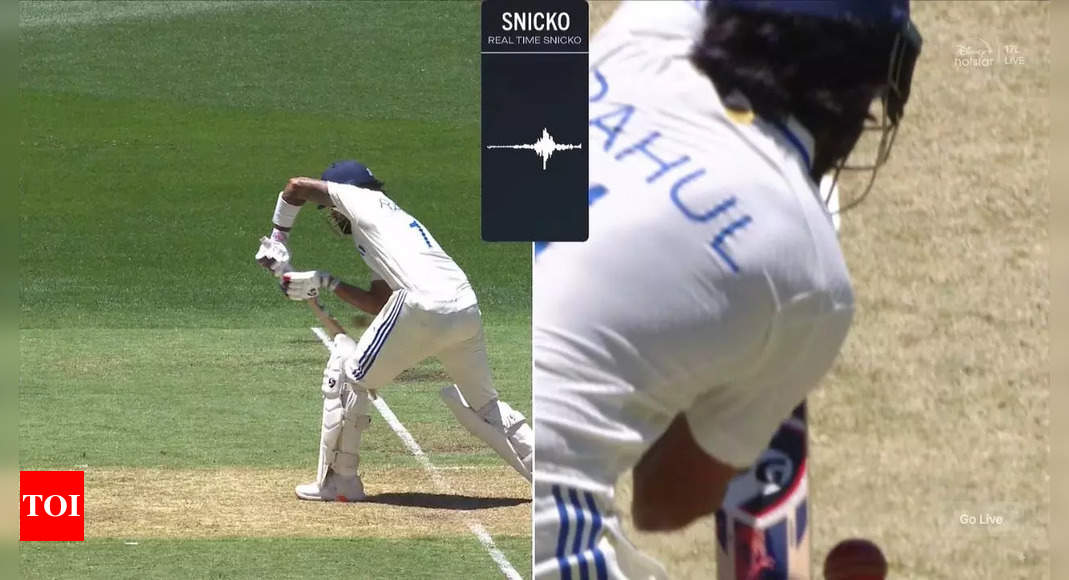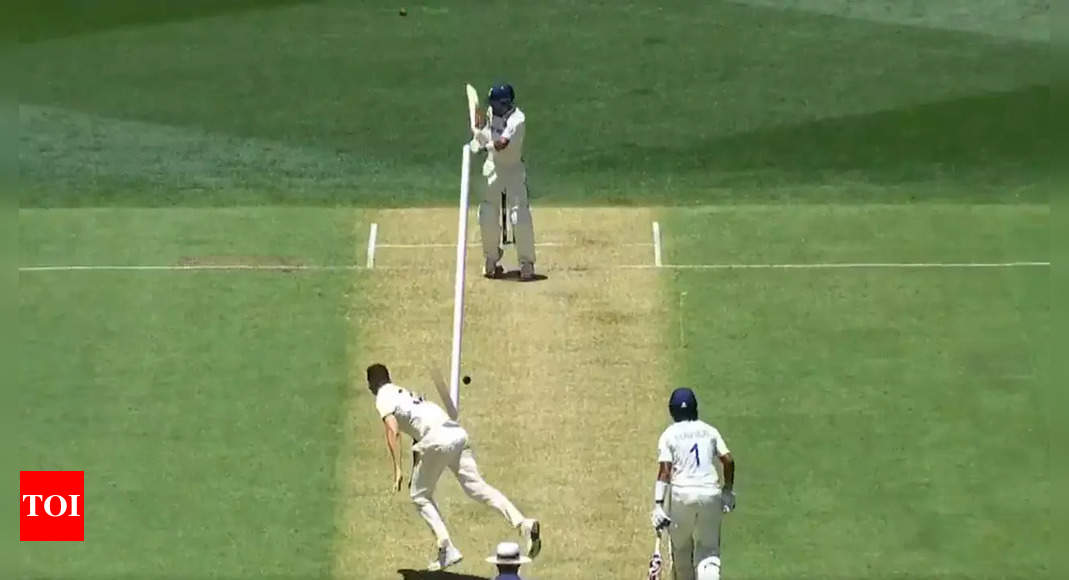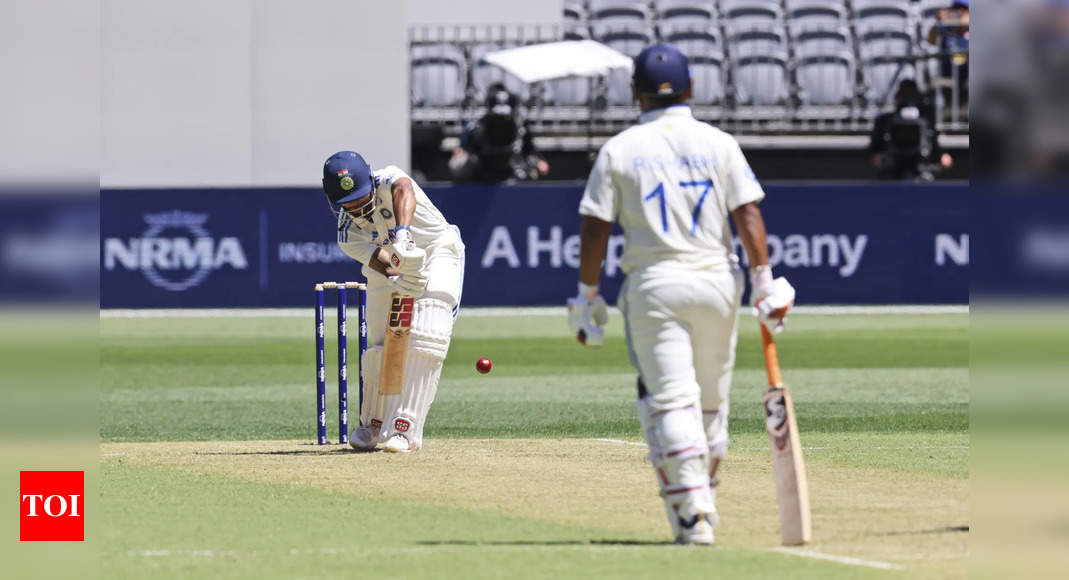
NEW DELHI: Team India batter KL Rahul’s dismissal during the opening Test against Australia in Perth has ignited widespread debate and frustration among fans and pundits.
The incident, which occurred in the 23rd over of India’s innings, saw Rahul walking back for 26 after a controversial third-umpire decision.
SEE ALSO: When was the last time both R Ashwin, Ravindra Jadeja missed a Test for India?
Facing Mitchell Starc, Rahul, who was looking in good touch, got forward to defend a delivery that angled across him.
The ball passed close to the bat and was caught by wicketkeeper Alex Carey. Initially, the on-field umpire ruled it not out, but Australia opted for a review, claiming a faint edge.
The review showed a spike on Snicko, indicating contact as the ball passed the bat.
However, the front-on replay, crucial for determining if the sound came from the bat or bat-pad contact, was inconclusive.
Despite the ambiguity, the third umpire overturned the decision, citing the spike as sufficient evidence of an edge. Rahul, visibly upset, shook his head in disbelief as he walked off the field after making his argument clear to the umpires.
SEE ALSO: India vs Australia: Virat Kohli’s change in guard didn’t work, lean run continues in Perth – Watch
The dismissal triggered a wave of anger on social media, with fans labelling the decision a “joke” and questioning the reliance on partial evidence.
Many argued that the lack of a definitive front-on angle should have resulted in the benefit of the doubt being given to the batter.
“First of all, disappointed with what was provided to the TV umpire,” Manjrekar told Star Sports. “He should have got more evidence. Based on just a couple of angles, I don’t think such an important decision in the match should have been made. My point is, with the naked eye there’s only one certainty and that’s the pad being hit by the bat. It’s the only visual certainty we’ve got that with the naked eye. For everything else, you needed the aid of technology, which is Snicko.”
“So ideally, if there was bat, as an edge to the ball, there should have been an earlier spike because clearly two events there, and the umpire obviously heard one noise. The visual certainty was bat hitting the pad. If that was the spike, then there wasn’t an outside edge. If we were shown two spikes, then you could say the first one was the bat. So it was a poor supply of technology to TV umpire, and he should have said he can’t nail it.”
“If there weren’t two spikes, they should have gone with the visual evidence which was bat hitting the pad. I think it was poor all around, and I don’t blame the on-field umpire. You got to feel for KL Rahul, the amount of hard work that’s been put opening the innings. And such a big moment personally for him when you look at his career and for India too. Travesty in a way,” he further added.
Rahul’s departure added to India’s woes as the team struggled against Australia’s pace attack.
At the time of his dismissal, India were 47/4, with Starc and Josh Hazlewood dismantling the top order.
Rahul had shown resistance, consuming 74 deliveries and hitting three boundaries before the contentious call cut his innings short.







